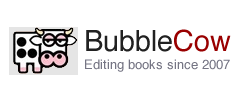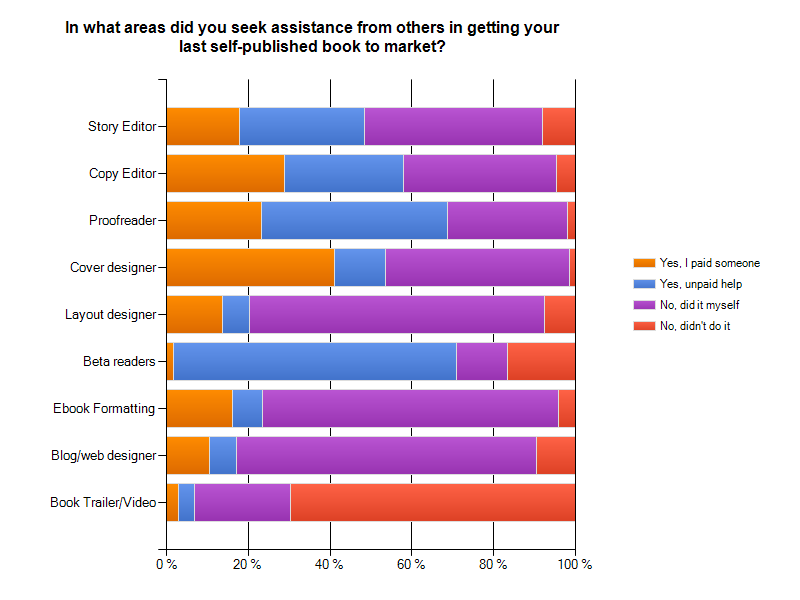In this article I ask if seeking professional help (editing, cover design, ebook conversion etc.) is really beneficial. We look at the areas where self-publishing writers spent money and discover if this had a long term benefit on their book sales.
At the start of 2012 Dave Cornford and Steven Lewis set out to survey more than 1000 self-published writers. Their aim was to identify the common factors that led to the success of the ‘normal’ self-publishing writer. They were not interested in the ‘Kindle Million’ members, but instead, wanted to see what the ‘normal’ writer could do to help improve their chances of success.
This series of posts delves into their research and presents the findings in a way that YOU, a ‘normal’ writer, can use to make your book a success.
Getting Help
One criticism often levelled at self-published writers is that their work is below the standard of traditionally published books. A belief exists that self-published books are unedited, badly proofed, poorly set out with disastrous covers.
So did the survey go any way to dispelling this myth?
Well… no!
It turns out that of the 1000 writers surveyed the majority of them published their books without any kind of professional input.
- 70% of writers digitally publishing formatted their own ebooks.
- 70% of writers using print-on-demand designed their own internal layouts.
- 45% of all self-publishing writers designed their own cover.
What did People pay for?
The survey shows us that roughly 30% of self-publishing writers paid for at least one kind of professional service.
The most common investment was in cover design with 45% of writers paying for a professional cover design.
The next most common area where writers were willing to pay for professional help was with copy editing. Here we saw that 29% paid for a copy editor to check their work, though a further 29% received unpaid copy editing.
Proofreading was next on the list with 25% of writers paying a professional proofreader, though 46% received proofreading for free. The remaining 29% proofread their own work.
Just behind proofreading was story editing (which we offer) with about 20% of writers opting to pay for this service.
One trend worthy of mention is that writers who had already self-published with no professional help were, on average, 30% more likely to pay for help with their subsequent books. The biggest ‘winner’ here was story editing with a 31% increase amongst serial self-publishers.
Source - http://blog.taleist.com/
Does Paying for Professional Services Help Sales?
It is easy to say that self-publishers should be paying for professional input, but is this really true?
The bottom line is that self-publishing is a business and if professional help is to be considered essential it must demonstrate a benefit in sales.
The survey addressed this question directly and found that ‘self-publishers who received help with story editing, copy editing, and proofreading made 13% more than the average.’
A potentially more interesting fact was that self-publishing writers who received help with story editing, copy editing, proofreading AND COVER DESIGN, made 34% more than average.
This suggests that a professionally designed cover alone is worth an 18% spike in sales.
On the flip side, those paying for professional ebook formatting saw just a 1% increase in sales.
Perhaps the most depressing figure is that writers doing their own story editing, copy editing, and proofreading made 58% LESS than the average writer!
Conclusion
The figures speak for themselves when it comes to getting professional help.
Writers who did seek professional help sold more books than those that did not.
This means that if you are seeking to maximise the sales of your book you should do the following:
- Pay for a professional cover to be designed.
- Pay for professional story editing, copy editing and proofreading.
My final word is that though the figures are clean cut, what the survey fails to address is profitability. It may well be the case that the overall sales of niche titles means that spending close to $1000 (if not more) on design and editing is simply not viable for your book.
At BubbleCow we often work on a figure of 250 sales to cover the cost of story editing. If you don’t think you can sell 250 copies of your book, then story editing might just be too expensive. However, the survey is suggesting that you need more than just story editing. I would therefore be looking at a figure of around 500 book sales to break even.
The reality is that for a well marketed book 500 sales is not an unachievable figure. At BubbleCow we talk to writers on a daily basis who are selling between 100 and 1000 books a month. This said, we tend to say that 100 a month is a more realistic figure start figure.
In conclusion, I feel the choice on how much to spend on preparing a book for publication is one that needs to be taken on a book-by-book basis. If you feel your book can sell more than 1000 copies then I would strongly suggest you invest in cover design and editing. However, if you feel 1000 copies are simply beyond your expectations then you need to adjust your budget to match. In this case I would be saying that, if nothing else, you should be looking for a professional cover design.


Apr 2013